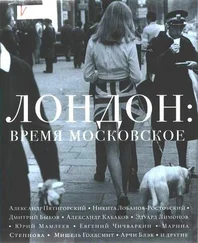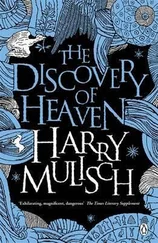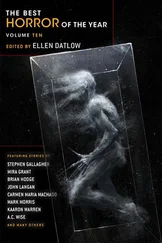She could smell it as soon as she pushed the door open, old blood and flesh just beginning to decay. Jen Keck lay in bed, curled up on her side, her blankets drawn up around her shoulders. Half her head was gone, splattered across the walls and the pillow. Hershel was in the next room, seated cross–legged on the floor, leaning against his bed at a drunken angle. His hands and feet were bound, and tied to the bedpost. He was wearing a white t–shirt and boxers, both covered in flaking, rusty brownish–red where he’d bled to death after his throat had been slit.
Franz Van lay on the bed in the master bedroom, atop the covers, bound as his son had been. His eyes were frozen open. He had been shot at point–blank range through the left temple.
Sheriff Philips had tried to call the homicide in upon first entering Jen Keck’s bedroom, but had found she couldn’t get a signal. She continued through the house, room by room. Shelly Keck she finally found in the ground–floor study, a room Philips had forgotten about during her initial movement through the house. Keck lay slumped in a corner in a dried puddle of blood, having been shot at least twice. Keck’s hands were raw and twisted and the post–mortem would later reveal that her fingernails had been torn off and her fingers broken before she died.
Finally, having explored the entire house and found nothing except the four bodies, Sheriff Philips stepped outside and made her call. She went over to her car and sat on the passenger’s side seat with her head in her hands while she waited for the response unit to arrive.
Later, after the scene had been photographed and modeled and the bodies removed, the forensics team began its long and thankless task, gathering the hundred million shreds of DNA◦– strands of hair, flakes of skin, eyelashes, traces of blood, of sweat, of saliva, of semen, dried mucous, brain matter, fecal matter◦– that had drifted about the house and grounds to settle in cracks and corners and the quiet, dark spaces. They found DNA from more than five hundred and fifty discrete human beings, an astonishing number of people to have left evidence of themselves in an isolated farmhouse on the edge of the Lakshmi Planum. There were, moreover, no fewer than ninety–eight usable finger– and palm–prints from separate people and fifty–seven different sets of footprints, as well as traces of twelve unique tire–tracks on the driveway. Even using the planet’s central biometric database, the majority of the DNA evidence could not be easily identified.
There were no shotgun casings◦– the killers must have removed them◦– and the knife used to slit Hershel Keck’s throat could not be found.
The forensics team did find something, however; something Philips specifically asked them to search for. At six separate locations outside the house, nestled up against the wall, the forensics team found powerful, non–brand, professional–grade dampers◦– those clever little machines that schools use to block radio and electromagnetic signals from wireless devices, preventing their students from calling or texting or in any way interacting with each other or with the outside world when they should be listening to their lectures. Back in the forensics lab at Riccioli, it was discovered that the six dampers interfaced in such a way as to emit a pale green glow.
III
Ashen light is the name a seventeenth–century astronomer gave the soft, greenish glow he detected emanating from the dark side of Venus. Although a number of astronomers, both amateur and professional had, over the centuries, claimed to observe the ashen light, sightings remained rare enough that it was generally considered a fluke, a phantom of wishful thinking and unrelated, easily explained, phenomena. An early observer argued that the light came from the fires Venusians lit to celebrate the crowing of a new emperor. Once it was determined that Venus was neither habited nor habitable, and, in fact, that its atmospheric composition was so inimical to life as we understand it that it is improbable to the extreme that biological life ever existed there, other hypotheses were proposed to explain the occasional soft green glow of which some few observers caught sight. Perhaps, some suggested, it was caused by carbon dioxide being torn apart into carbon monoxide and oxygen, the process of which splitting emits a faint green light. Or, it was proposed, the greenish light could have been nothing more than the glow of lightning from Venus’ many electrical storms, diffused through carbon dioxide and nitrogen clouds that suffocated the planet pre–activation. Whether the effect was even real remained a topic of heated debate well into the twenty–second century.
When the dynamo was activated and the terraforming project began in earnest, a strange and entirely unexpected effect was noted. Although the planet’s atmosphere, both real and artificial, was configured to resemble the Earth’s, something about the way sunlight refracted off the Overdome meant that, very rarely, on dark, cloudy nights, a faint greenish glow could be seen on the horizon. Papers were written, doctorates were awarded, and academic conferences were convened to discuss and dissect the new ashen light, but the majority of Venusians cared not one whit about official explanations. They were content in the knowledge that Venus’ Overdome, the greatest feat of engineering in all human history, which was otherwise wholly invisible, had this single, rare, beautiful manifestation. That it was something unique to their planet. To them.
The Keck family, Riccioli’s forensics team determined, died several hours after they’d first been tied up. To this day, Alvin Go, the man who lives in the cabin east of the Keck family farm, who couldn’t sleep the night they died, who looked out the window and congratulated himself for having been awake to see the rare glow of the ashen light, says only one thing. “If I’d have known. If I’d have had any idea. Maybe I could have saved them.
“But I thought it was the ashen light.”
For a while, Sloane and Griffith lived well in New Tahiti, having taken a secluded cabin on an atoll well away from the busier tourist resorts. They coexisted peacefully for three and a half weeks, Sloane sunbathing and swimming and wandering the little island, running her fingers across the lush green leaves as she passed through the jungle, whispering the names of the plants to herself. There’s a photo of her from this period, recovered from Griffith’s phone, showing a small woman in a bikini standing thigh–deep in unnaturally blue waters, her face glowing with joy. When the money ran out, Griffith, already bored with island life, proposed they find a mark at one of the resorts◦– a rich old woman, he suggested, who might be interested in maintaining a healthy and handsome young man for some period. Sexual jealousy was beneath the two of them, he reminded Sloane; the province of middling, lesser people who cared more about possessions than about freedom. Sloane acquiesced more or less gracefully, unwilling to be parted from Griffith. But once they’d returned to Tiare, New Tahiti’s primary island, Griffith found inveigling his way into the good graces of a wealthier older patron more difficult than he’d imagined. It fell to Sloane to take up the casual prostitution that paid for their cramped two–room apartment on the outskirts of town while Griffith slipped around the resorts during the day, creeping into empty rooms to rummage through colorful baggage for money and valuables as the tourists to which the luggage belonged snorkeled, oblivious, off the coast of Tiare.
The first lead came from the dampers, which yielded no fingerprints or DNA evidence, but proved to be the property of three different institutions, all in or around Helios. Over time, too, the forensics team accumulated enough data to indicate that the majority of DNA found at the scene of the crime but not connected to the Keck family or any regular visitors to the farmhouse could be traced to hundreds of people who had, at some point in the recent past, been in Helios. Much of the hair, moreover, had the blunt edges characteristic of recent cutting. Philips’ response unit, with Philips taking lead, went to Helios in early January 2520, to begin the arduous task of visiting Helios’ seven hundred and twelve salons and barber shops to request security footage. They were able to locate the correct salon, an establishment serving commuters on the edge of Helios’ financial district, within ten days. But there the trail went cold. No security cameras had caught anything in the least suspicious, and Sheriff Philips wasn’t sure what gender the Keck family murderers were, much less how many people had been involved in the killings◦– although she felt reasonably certain there had been two.
Читать дальше












